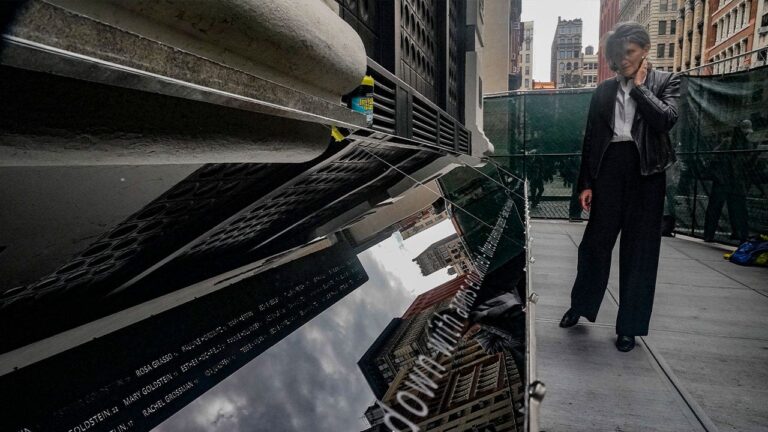New York City Unveils Memorial to 1911 Triangle Shirtwaist Factory Tragedy
In 1911, a devastating fire at the Triangle Shirtwaist clothing factory claimed the lives of 146 people, primarily immigrant women and girls. The tragic incident, which occurred in New York City, ultimately served as a catalyst for the U.S. labor movement’s pursuit of enhanced workplace safety.
Today, as the United States grapples with a series of strikes across various industries, a new memorial in New York City commemorates the 1911 disaster.
A Memorial to Remember
If you walk by the building where the Triangle Shirtwaist factory once stood in New York City, you may notice plaques highlighting a horrific fire in 1911 that played a pivotal role in the American labor movement’s quest for safer workplaces. But for many, these plaques fall short of honoring the 146 victims.
After years of dedicated efforts, the Remember the Triangle Fire Coalition is unveiling a new, unmistakable memorial. This striking monument features a massive steel ribbon bearing the names of those who perished in the disaster, predominantly women and girls. Beneath it, a reflective panel displays stenciled names and quotes from eyewitnesses describing the chaos.
In the weeks to come, a towering steel column will be added to the corner of the building, reaching nearly its full height—an acknowledgment of how high the victims were trapped.
A Tragic Tale of Immigrant Women
The victims were nearing the end of their workday on March 25, 1911, when a fire erupted on the eighth floor of the factory, situated in the upper floors of a building now owned by New York University. Panicked workers attempted to flee as the flames spread to the ninth and tenth floors. Some scrambled for elevators or sought refuge on the roof. Tragically, some who tried to escape found a locked door, trapping them inside. Later, during the factory owners’ trial, it was revealed that the door had been intentionally kept locked due to theft concerns.
Although firefighters arrived swiftly, their ladders were too short to reach the uppermost floors. Horrified onlookers watched in disbelief as workers leaped from the windows, among them the late Frances Perkins, who was already an advocate for ending poverty and improving workplace conditions. Witnessing the tragedy deepened her commitment to workers’ rights.
A Catalyst for Change
Frances Perkins would go on to be part of a state commission that implemented safety regulations in New York, serving as a model for the rest of the country. She later played a vital role in President Franklin Roosevelt’s cabinet as the secretary of labor, advocating for policies such as minimum wage, workers’ compensation, and old-age pensions.
One of the names on the memorial is Rosie Weiner, who tragically perished in the fire, while her sister and fellow factory worker, Katie Weiner, managed to escape. Katie’s harrowing escape by grabbing an elevator cable is recounted in the memorial.
The memorial serves as a bridge between the past and the present, highlighting ongoing issues related to labor, workplace safety, and the treatment of workers. It reminds us that industrial disasters and worker-related challenges persist worldwide.
Continuing Relevance
Designed by Richard Joon Yoo and Uri Wegman, the memorial aims to connect modern-day people with the fire’s legacy. The public was invited to contribute pieces of fabric, which were assembled into a 300-foot “Collective Ribbon” and then etched onto the steel memorial.
In a year marked by labor activism and strikes in various U.S. industries, the completion of this memorial underscores the enduring relevance of the Triangle Shirtwaist fire. It serves as a poignant reminder that challenges such as immigrant rights, workplace safety, and the treatment of women in the workplace are far from resolved.
As we look back on this tragedy, we are compelled to address these critical issues and ensure a safer, more equitable future for all workers.

